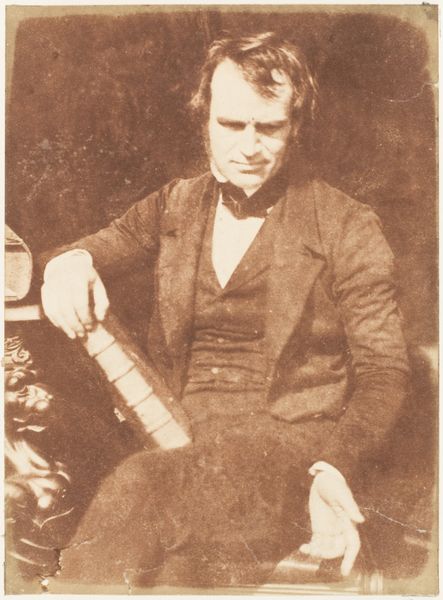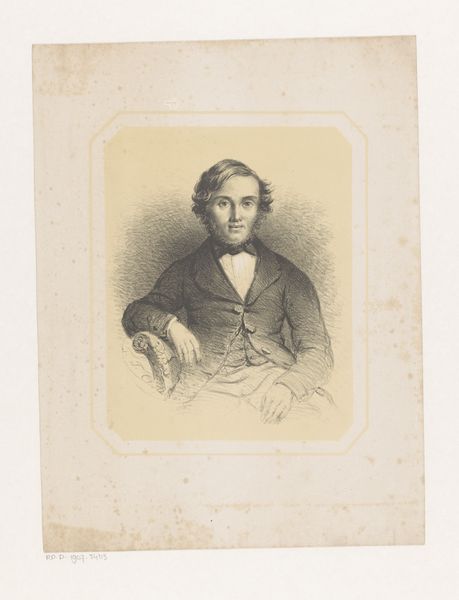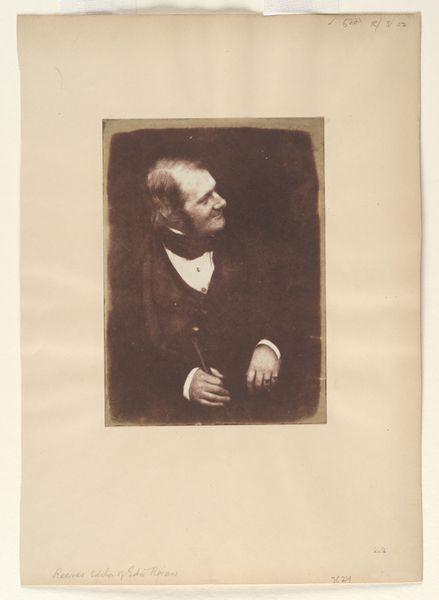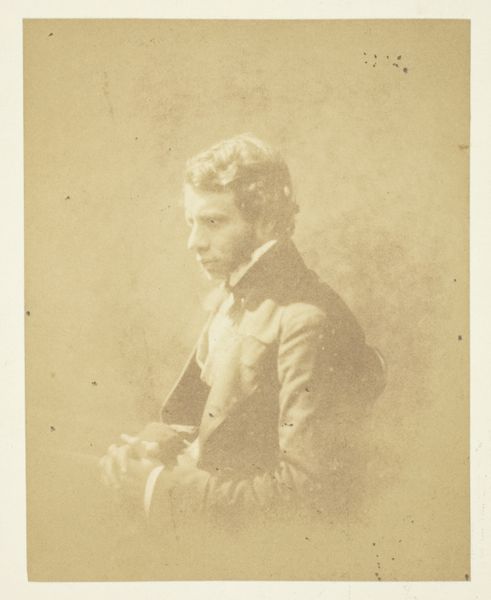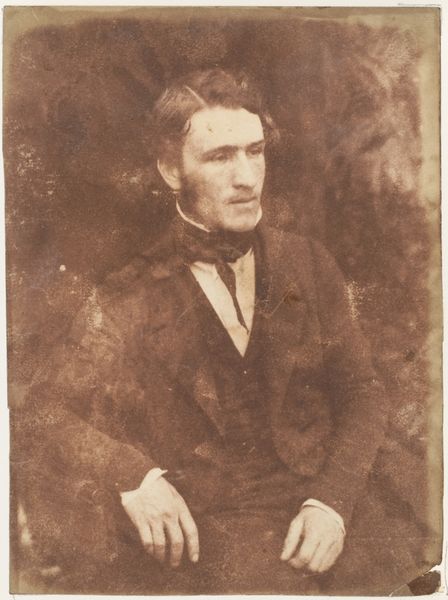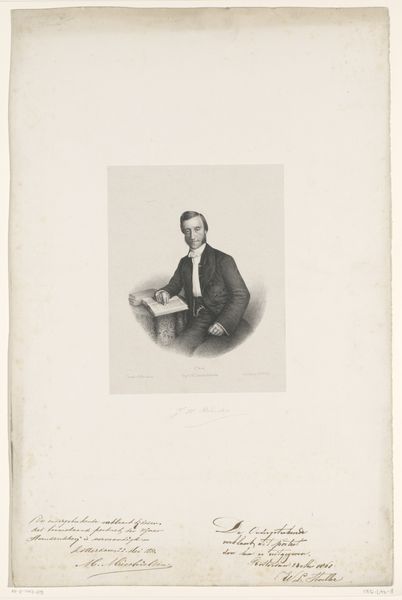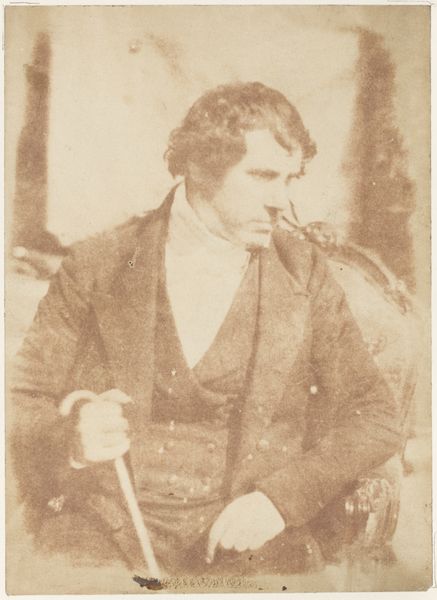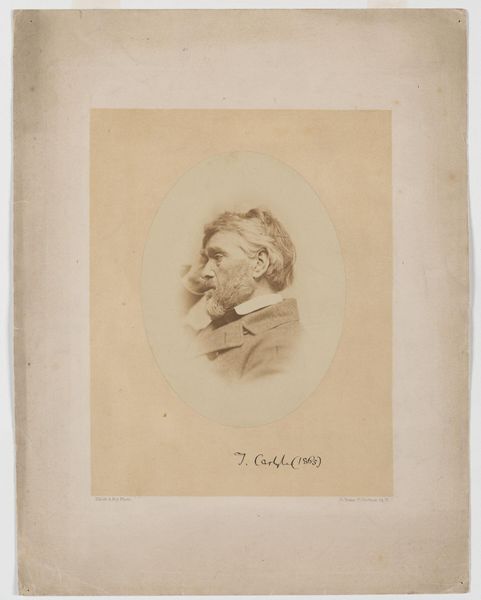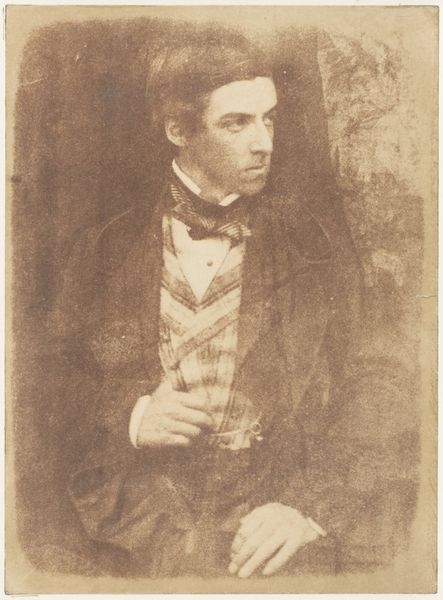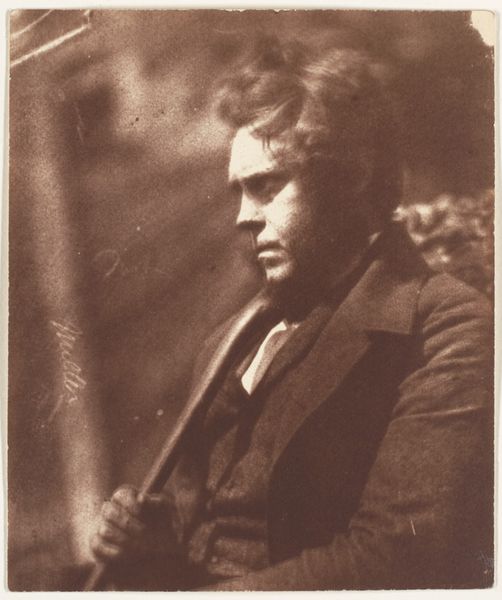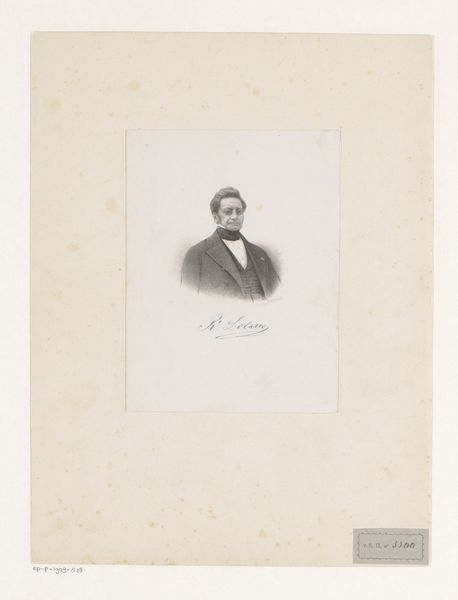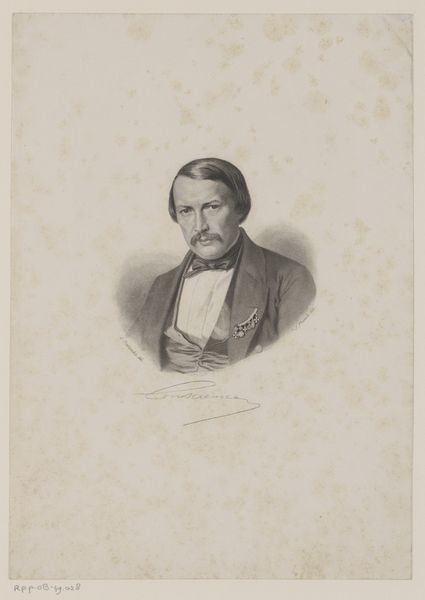
daguerreotype, photography
#
portrait
#
daguerreotype
#
photography
#
romanticism
Copyright: Public Domain
This portrait of Dr. Latham, the editor of a dictionary, was created by Hill and Adamson between 1843 and 1848, using the calotype process. The composition of this photograph is immediately striking. Dr. Latham is centered, his gaze direct, yet the sepia tones and soft focus lend a certain ethereal quality. Notice how the light, subtly manipulated, emphasizes his face and hands, drawing our attention to the intellectual labor they imply. This is reinforced by the way his hands are clasped, as if holding an invisible book, a gesture that speaks volumes about his profession and identity. Consider the implications of early photography. Hill and Adamson were not merely capturing a likeness; they were participating in a dialogue about representation itself. This image isn't just a portrait; it's a study in the poetics of light and shadow, a testament to the transformative power of early photographic techniques. It invites us to reconsider the relationship between the subject and the image, between reality and representation.
Comments
No comments
Be the first to comment and join the conversation on the ultimate creative platform.
